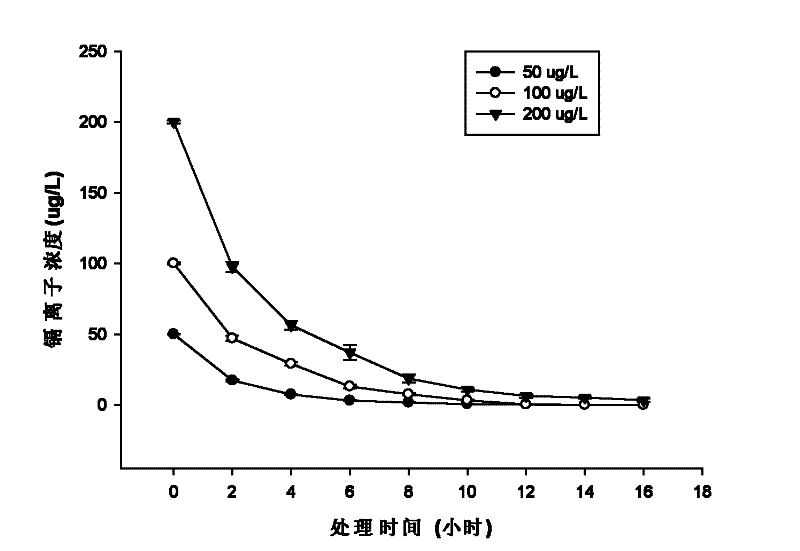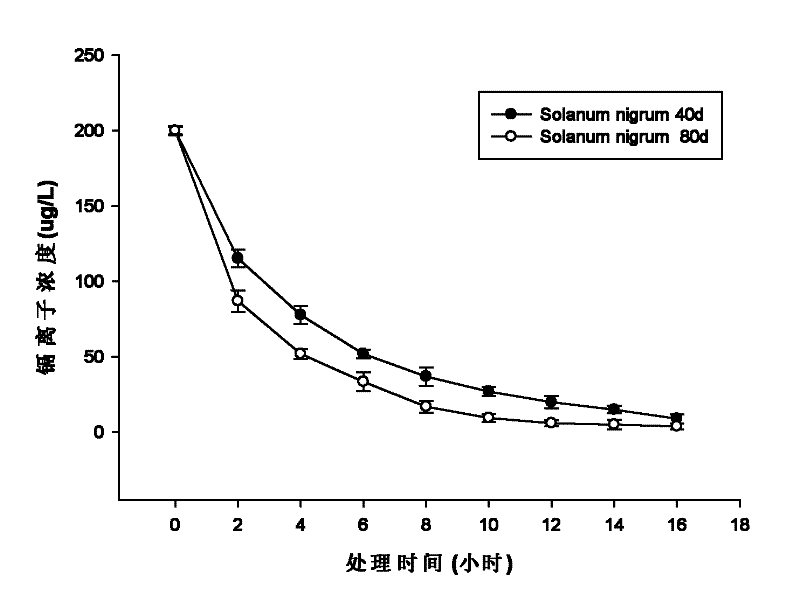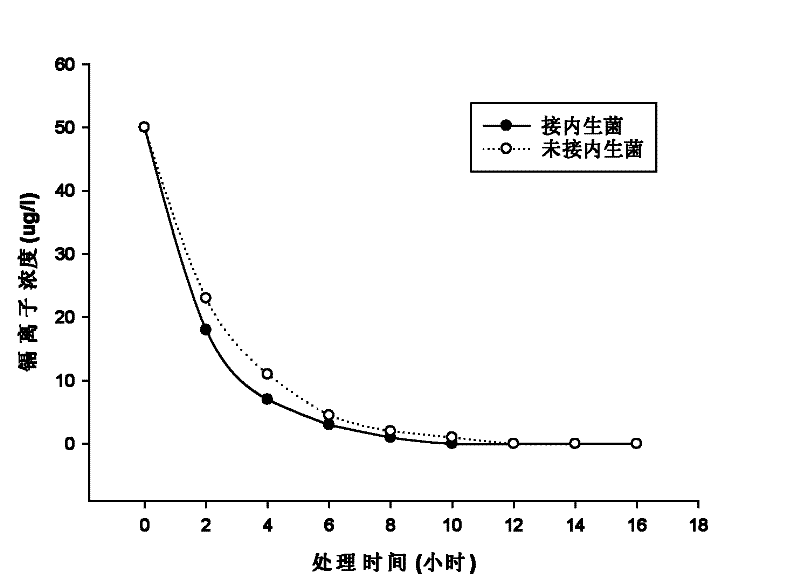Microorganism for promoting black nightshade to remove trace cadmium pollution in water and method for removing cadmium pollution
A technology for microorganisms and water removal, applied in the field of microorganisms, can solve the problems of poor reusability, complex process, secondary pollution, etc., and achieve the effects of large application potential, good removal effect, and easy operation.
- Summary
- Abstract
- Description
- Claims
- Application Information
AI Technical Summary
Problems solved by technology
Method used
Image
Examples
Embodiment 1
[0027] Germination of nightshade seeds, inoculation with Chryseobacterium sp.LKS03 and hydroponic culture of plants:
[0028] 1. Solanum solanum seeds are soaked in 75% alcohol solution for 15 seconds to sterilize the surface, rinsed with water for 3 times, dried and used for Chryseobacterium sp.LKS03 inoculation.
[0029] 2. Soak the sterilized Solanum nigrum seeds in Chryseobacterium sp.LKS03 inoculum solution for 2 hours, take them out and use them for sowing.
[0030] 3. Spread the vermiculite in a tray with a thickness of about 5 cm, pour it thoroughly with 1 / 4 concentration of modified Hoagland's solution, and sow nightshade seeds in it. It will germinate in about 2-3 days, and the black nightshade can grow to a height of 10 cm in about 2 weeks and be transferred to hydroponics.
[0031] The improved Hoagland solution with a concentration of 4.1 / 4 is also used as a hydroponic nutrient solution, and the nutrient solution is changed every 5 days and replenished from time ...
Embodiment 2
[0033] Chryseobacterium sp.LKS03 has a high ability to produce ACC (1-aminocyclopropane-1-carboxylic acid) deaminase and IAA (indole acetic acid), which can promote the growth of plant roots. On the 45th day and the 80th day of the growth cycle, inoculated Chryseobacterium sp.LKS03 plants and plants without inoculation collected 5 samples respectively, and measured root length and root weight. The results are shown in Table 2:
[0034] Table 2
[0035]
[0036] On the 45th day of the growth cycle, the root length and root weight of Solanum nigrum plants inoculated with Chryseobacterium sp.LKS03 increased by 21.8% and 25.8%, respectively; The length and root weight increased by 25.7% and 38.8%, respectively. The experimental results showed that the inoculation of Chryseobacteriumsp.LKS03 had a significant effect on the root growth of Solanum nigrum.
Embodiment 3
[0038] Tap water was added with heavy metal ions to simulate polluted drinking water. The concentration of cadmium in the simulated polluted drinking water was 50 μg / L. The ability of inoculated nightshade and non-inoculated nightshade to purify the simulated contaminated drinking water was compared. 1 liter of simulated polluted drinking water was poured into the water tank. Solanum nigrum was fixed above the water tank, and the roots were in contact with the water body. The change of cadmium concentration in the water body was tracked and detected within 16 hours. The cadmium concentration was measured by an atomic spectrophotometer. The water purification effect is as follows: image 3 Shown: From the experimental results, it can be seen that Solanum nigrum inoculated with Chryseobacteriumsp.LKS03 will reduce the cadmium content in drinking water to below the national standard (<10μg / L) within 3 hours, and Solanum nigrum not inoculated with endophytic bacteria will take 4.5 h...
PUM
 Login to View More
Login to View More Abstract
Description
Claims
Application Information
 Login to View More
Login to View More - R&D
- Intellectual Property
- Life Sciences
- Materials
- Tech Scout
- Unparalleled Data Quality
- Higher Quality Content
- 60% Fewer Hallucinations
Browse by: Latest US Patents, China's latest patents, Technical Efficacy Thesaurus, Application Domain, Technology Topic, Popular Technical Reports.
© 2025 PatSnap. All rights reserved.Legal|Privacy policy|Modern Slavery Act Transparency Statement|Sitemap|About US| Contact US: help@patsnap.com



